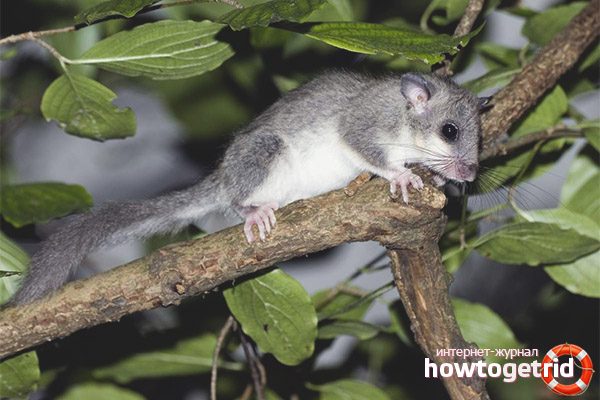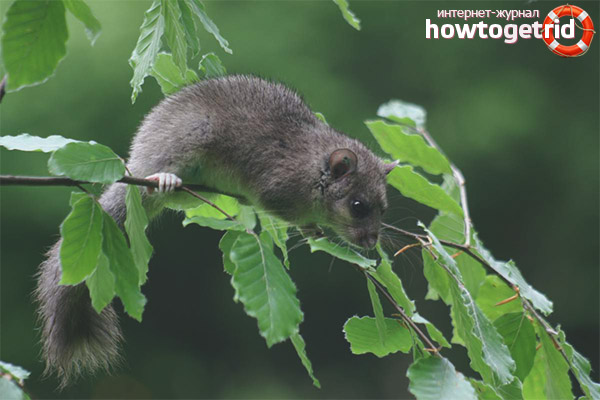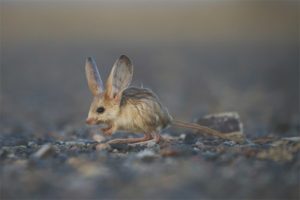The content of the article
As darkness falls, the forest plunges into a mysterious, slightly ominous silence. At first glance, nothing can break the current idyll. Occasionally in silence one can hear the rustle of dry leaves or the crackle of branches under the claws of a wild predator, accustomed to living in the dark. You can also hear owls, emitting heartbreaking, terrifying sounds. Predators and nocturnal birds are not the only inhabitants of the night forest. If you listen, you can define a very strange sound "ttsiiii-ttsiiiiii-ttsii", the owner of which is a tiny little animal, known as a little regiment. You can see a furry creature by looking at the trees. He will sit on a branch with his head stretched forward, with a wide mouth, to make trills. The ears are raised and approach each other for every cry.
High-frequency sound covers a decent distance and can be heard more than 30 meters from the regiment. The song itself lasts no more than ten minutes. This is followed by silence, which will last for some more time, while the animal listens to the sounds of the thicket in the hope that the female heard it. If the chosen one is nearby, she answers him with her whistle, sounding like a call.
Description and features of the animal
The animal does not just bear such a name, because a dream is the basis of his life. If you take the annual period, in a sleeping state, the shelf will spend about 9 months. In the month of September, the animal hibernates, and wakes up in June, when it is warm.
Polchok is the largest representative of sleepyheads. The length of its body can reach 18 centimeters, the tail - 10 cm, and the mass of the animal - about 170 grams.
External characteristics:
- Short, rounded on top (mouse) ears, covered with a rare fluff.
- The hairline of the animal is rare, the sole of the hind legs is open.
- Around the eyes, darkened, not always noticeable rings are visualized.
- The disproportionately long vibrissa (whiskers) reaching 6 centimeters are clearly visible on the face.
- The main color of rodent hair is smoky gray, but may include silver elements and brown impurities.
- The tail is white with a small splash of gray.
By its appearance, the rodent vaguely resembles a squirrel, this explains why it was initially attributed to the group of somniformes. The abdominal color (it’s white in the regiment) and the absence of brushes on the tips of the ears refute their similarity.
Sonya-polchok represents a detachment of rodents and is a valuable beast. Its meat is edible, and fur is of high value in industry. To date, the animal is listed in the Red Book as one of the endangered. Every year its number decreases and this requires human protection.
Environment and living conditions
The most favorable place for the animal to live is forests with an abundance of fruit trees, nuts and beech. Coniferous vegetation is not attractive for the regiment. The object of increased importance, no doubt, are hollow trees and berry bushes. In rare cases, the animal is ready to settle in a birdhouse or hollow, created by human hands. Because of the roof, such a house often does not attract the birds for which it was built. But the rodent will appreciate the overhaul and the closed type of housing.Also, the animal can settle in the territory of the building intended for people, taking a place under the roof or in the attic.
The regiments are calm neighbors and often change their place of residence due to night activity. They easily let their own kind on a visit and do not try to fight for property rights. Not bad take root in the cells, provided good nutrition and adequate space.
The animal is naturally clean. As soon as he is outside his home, he sits on a branch and arranges his coat, as well as washing with the front legs. Having guided the marafet, the rodent returns to the nest and hides in the foliage.
For improvement of the house are not only leaves, but also moss. Males practically do not do housekeeping and are generally extremely lazy. Nothing can be seen in their kennel, except for a pair of leaves, thrown haphazardly. Basically, accuracy and hard work are inherent in females.
The vigorous activity of the animals begins late in the evening and fades away in the morning, as they need a good day's sleep. Sonia spends most of the time on tree branches, only occasionally going down to the ground. Each individual is jumping and can span a distance of up to 10 meters with one jerk.
Hibernation

With the onset of cold weather, the animal hibernates for 9 long months. This type of rodent does not sleep alone, in winter, up to 8 individuals can be found in one nest. During sleep, all vital processes of the animal slow down.
The older generation falls asleep last. The process occurs in ascending order, adults and then old people fall asleep behind young animals. The regiments wake up hungry and immediately begin to eat intensely, which is extremely necessary during this period.
Power Features
Shelf is a herbivorous animal. But there are rare cases when you can catch a rodent eating a bird's egg, an insect or the bird itself. Favorite food for the animal are high-calorie foods, such as:
- nuts
- rosehip berries;
- chestnuts;
- acorns;
- tree bark.
At the end of summer, using such food intensively, the rodent accumulates fat reserves, which will provide it with nutrients for the duration of hibernation and will not allow it to freeze.
If in the vicinity there is a fruit farm, they will not be shy and feast on there, making night raids. The closer winter is, the more time the animal spends in the mink. Shelf fills the house with food supplies and eats it with pleasure, without going outside.
Animals are more likely to be voracious than thrifty. They are inherently damaged by nuts that are bitten are thrown to the ground. This happens not in view of the weakness of the jaw apparatus, these animals, on the contrary, are capable of incredibly easy cracking down on a strong walnut skin.
Reproduction and longevity

Rodents give birth once a year. This happens between July and the end of August. Singing songs before mating is considered an integral part of their wedding ritual. Both females and males sing, this lasts until they hear each other. After the chosen one made contact, the animals begin rapprochement without stopping trills.
The next stage of the ritual is mating. In this case, the animals begin to run after each other. The rush ends and is replaced by a beautiful dance of two lovers who smoothly swirl in place. During the dance, the couple presses their noses to each other's tails.
The final stage of mating games is mating, as a result of which the female brings the long-awaited offspring. Sonya's pregnancy lasts for a month, at the end of the term babies appear in the amount of from 2 to 6 pieces.
Offspring development
The hearing aid is the first to function, ready for the perception of sound frequencies already on the 12th day after birth. The ability to see comes after three weeks. Newborn regiments feed exclusively on breast milk, food consumed by adults begins to be given to babies of two weeks of age and only in crushed form.
Full development of the adult diet and the transition to it occurs in the fourth week after birth. After a month and a half, small animals become crowded in the nest, they express a desire to go outside and independently, without resorting to the help of adult relatives, to get food for themselves.
Animals acquire the ability to produce offspring no earlier than 11 months of life.
The total life span of a rodent is no more than 4 years. Long-lived regiments are found exclusively in captivity.
Video: dormouse (Glis glis)










Submit